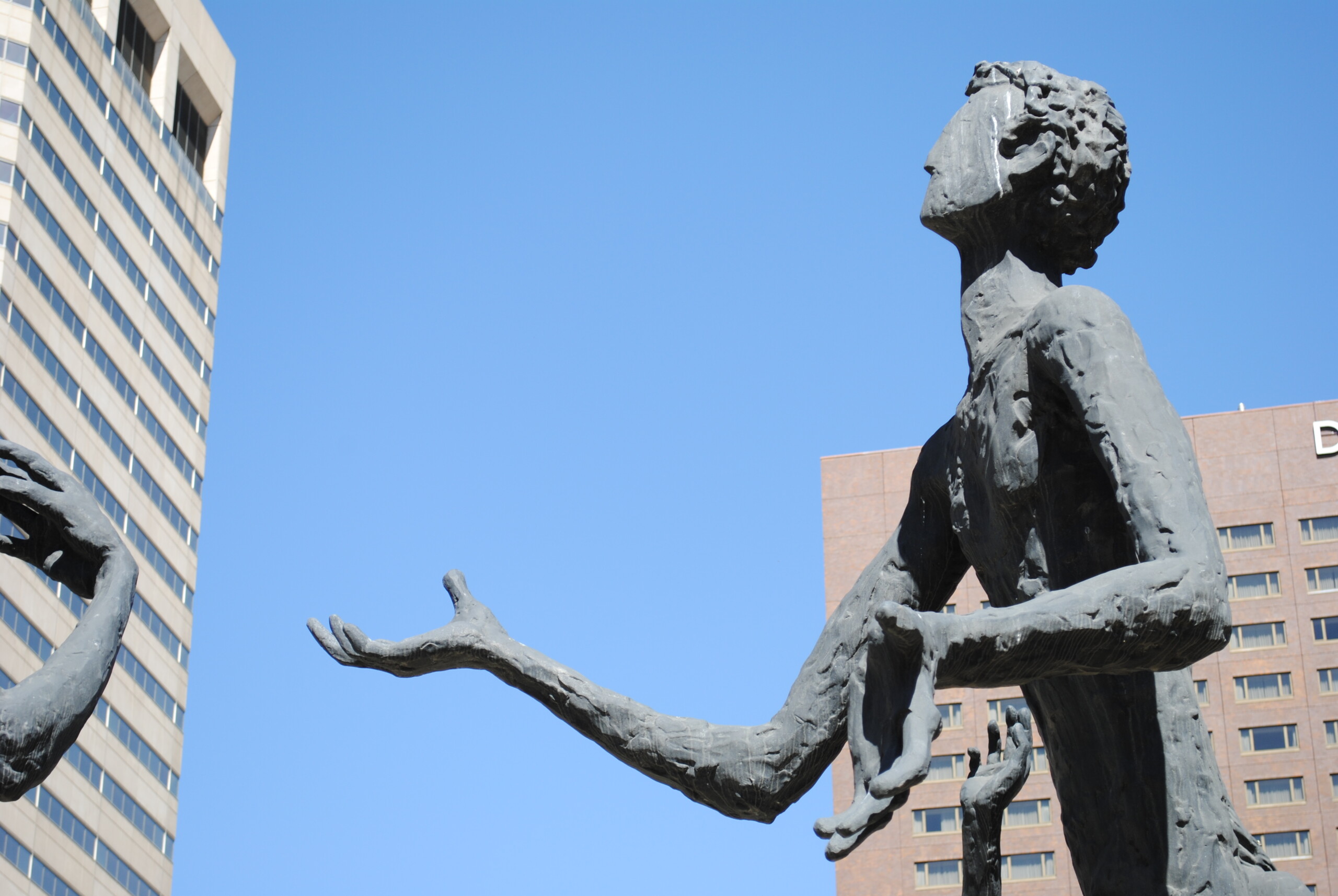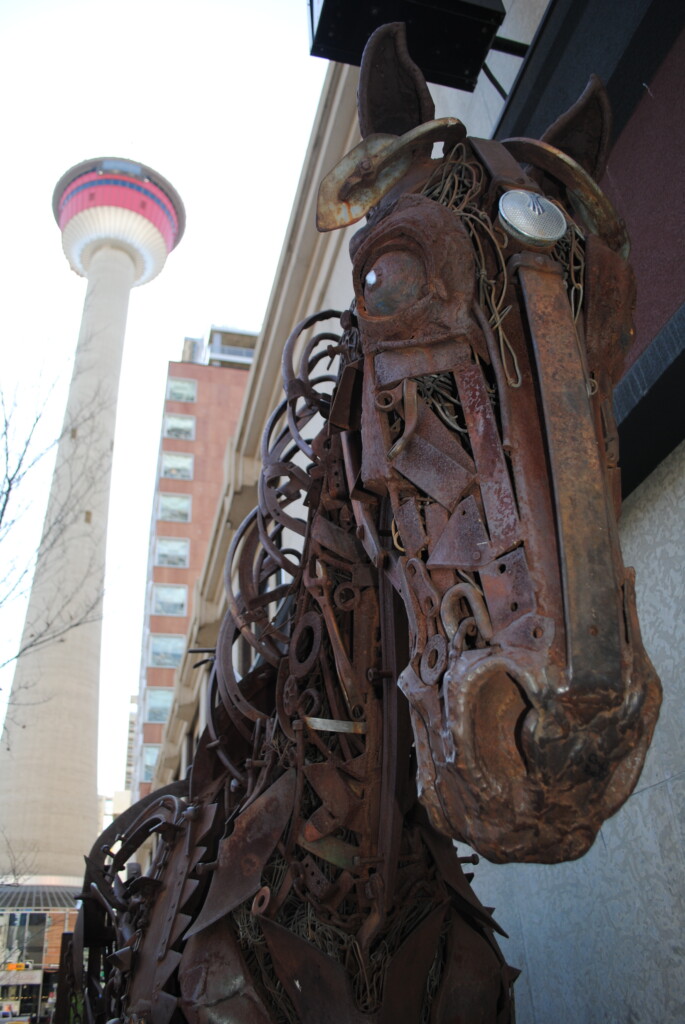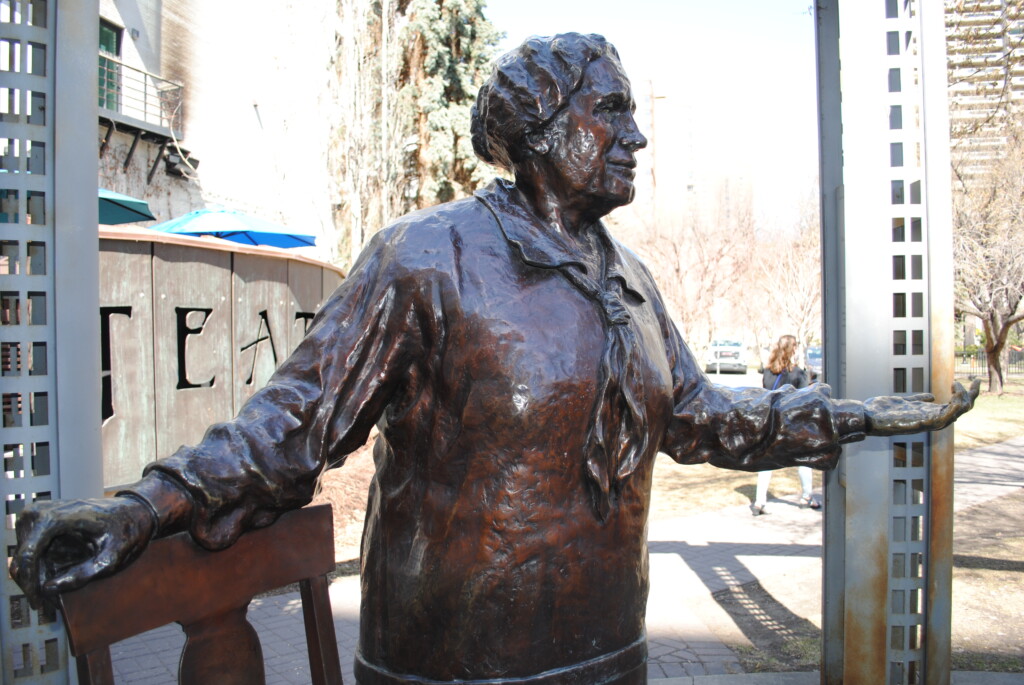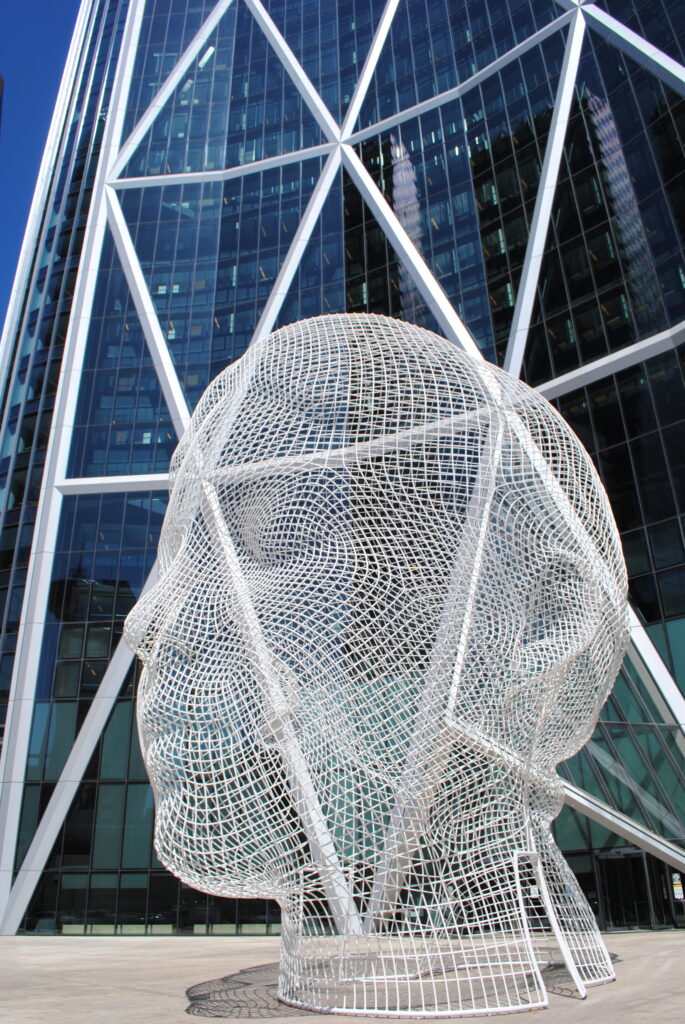A downtown tour of art

Photo by Andrew McCutcheon
We all know how this story starts.
Since the rise of COVID-19, every single story has to include some sort of mention of the world-changing pandemic, how it’s made it more difficult to do basically anything fun or recreational.
This is where I’d say that I’d had plans to go on a downtown walking tour of the various sculptures and public art pieces in Calgary but I’d only got the chance to do it once the pandemic gave me an opportunity.
This would be a story of finding a silver lining in an unbearably grey cloud; it would be a story of getting out there and seeking joy and beauty even in the darkest of times.
This is not that story.
This is the story of how I went on a downtown walking tour because I’d done more or less everything else available to me to pass the agonizing boredom created by COVID-19 restrictions and this was the last thing left on my list.
I know I’m relatively privileged: I’m young and healthy with a pair of relatively good-working legs, but art — particularly fine art — is not my forte or realm of expertise.
In fact, back in kindergarten I actually failed art class. How can a child only five years old, at most, fail a class in kindergarten? And art of all things?
I don’t understand it.
My fiancé can paint pictures and my friends can sew or knit or sculpt and to me, they might as well be flying or turning invisible for how easily I’d be able to replicate their success.
Art is not my wheelhouse. But, I’ve done all there is to do.
I’ve read novel after novel; I’ve taken up crosswords — what’s a six-letter word for drilling a hole that starts with B? —; and I’ve walked every single nature path from here to Fish Creek and back.
There was nothing left to do. So it was time to venture into a realm I barely understand, and to be fair, it was quite enjoyable.
So as I figure that I am probably the person in Calgary with some of the least sense in art — I don’t know if I’ve ever met another person who’s failed the subject in kindergarten — that means you, dear reader, have a good chance of enjoying yourself as well.
Family of Man
Family of Man is a set of sculptures originally created to be displayed at Expo 67 in Montreal, and now reside on 1st Street in Downtown Calgary.
This set of ten, 21-foot tall statues depict faceless, raceless humanoids standing in a circle, seemingly enjoying the sights of downtown themselves despite being large enough to climb Calgary tower as if it was a particularly tall backyard oak tree.
According to several sources I found after my downtown tour, the statues were originally part of an exhibit called Britain in the World, placed next to displays of what the British thought were gifts to the world: namely, language, systems of government and baked beans on toast, I assume.
Without this context, the average person just sees a group of extremely tall and lanky humanoids in a circle. And to be completely honest, as I stood under them taking pictures and the sights in equal measure, all I could feel was fear.
There’s something vaguely unsettling about the statues, uncanny in their proportions and poses. They seem as though they could be monuments to what we might have thought the gods would have looked like in an earlier age. I couldn’t get the image out of my mind of one breaking its frozen tableau to reach down and pick me up.
A friend once tried to explain to me that if art makes you feel an emotion — regardless of what that emotion is — it has done its job.
Fear is an emotion, right?
Family of Horses

I’m not trying to make this entire tale to be about fear but.
We went from a very unnatural fear — that is to say, the fear of 21-foot statues — and to what I consider an extremely natural fear: horses.
This piece, which stands proudly outside of City Hall, depicts a stallion overlooking its foal and mare. I would imagine it would represent something like the Albertan way of looking out for one another in the true frontier tradition, but all it represents for me is terror.
I was six years old — awhile after failing kindergarten art — when we travelled to a ranch on a school field trip. I was told to keep my fingers flat and to offer a horse a sugar cube in what I was told was a perfectly safe activity.
Have you ever seen a horse’s teeth? Can you imagine what it felt like to be bit by the unbridled fury of a terrifying single-tonne creature of pure muscle?
I am sensing that over this walking tour, I may have learned quite a bit more about myself than necessarily about art.
That being said, I can appreciate the aesthetics of the piece. It was on one of the warmer, sunny days in April that I made my trek, and the horses shined beautifully in the glow of the spring heat.
Doesn’t mean I didn’t take my eyes off them for a second, however.
Mechanical Horse

Oh, you’ve got to be kidding me. Another horse?
I kid, I kid. This sculpture was actually really interesting; the intricate inner workings of gears and cogs made me think about this province; how many active, moving parts go into taking care of everyone, especially these days.
There are so many people that remain nameless, just another working part, but without them the entire system would fall apart.
Nurses and teachers and postal workers, these are the sort of folks that keep the trains running on time.
Well, and quite literally, train conductors would be included in that list as well.
This gorgeous piece is located on a corner along Stephen Avenue, and was significantly less scary than an alive horse.
However, I would be remiss if I wrote a piece about public art, horses and fear and not mention Blucifer.
Blue Mustang, known to the locals of Denver, Colorado, as Blucifer is a horse sculpture located outside the city’s airport.
It’s 32-feet tall, entirely blue with burning, terrifying red eyes.
Can you imagine flying in with plans to head to Aspen for some skiing and staring out your window to see a demonic horse, missing its knight of the apocalypse, staring directly back at you?
I’d give up skiing for good. Trade in my tickets for Hawaii.
But of course, it’s just a statue. It’s not like it’s ever hurt anyone.
Wrong!
You couldn’t be more wrong.
Blucifer is also well-known, not just for its striking appearance, but the fact that Blucifer himself has a body-count.
Its creator was killed when a section of the sculpture fell on him. It was finished with the help of the artist’s staff and family.
Many might point this out as an unfortunate accident, but I say conspiracy.
(Please note that I don’t mean to find joy in a death of another human; the tragedy of this artist’s passing is real, but my Irish-Catholic background does tend to find humour in even the darkest of events)
Denver Police, you have a murderer in your midst and you’ve done nothing to make headway in the case.
Your complacency just lets the other horse sculptures of the world know they can get away with it.
Mechanical Horse? I’ve got my eyes on you.
Women are Persons

These sculptures were in the process of getting a spring cleaning with a power washer at their home in Calgary’s Olympic Plaza.
And as they should be. The fight they represent for equal and equitable treatment for all persons is something we should not quickly forget as the seasons pass.
It depicts five historic heroes when it comes to the battle for feminist and equal rights: Emily Murphy, Irene Parlby, Louise McKinney, Henrietta Muir Edwards and Nellie Mcclung.
The detail in their faces and poses are stark and grim, again, as they should be. It will be a reminder in bronze for decades to come about the battles that have past and the battles that have yet to be fought.
May we all one day look upon these faces with confusion, that our children’s children may have no idea what these sorts of battles would even look like, that they’ve all been fought and finished in their pasts, our future.
Wonderland

This sculpture easily turns heads.
I’m sorry, please find it in your heart to forgive that pun.
Outside of The Bow downtown, Wonderland is a stainless-steel representation of a massive, to-scale human head.
Not only do the features seem soft and so utterly human from a distance, there is another striking opportunity to view the structure: from inside.
Two small entryways allow the passerby to go within Wonderland and look from the inside out.
Standing there in the moment, the head looks and feels even larger, and the mesh of the sculpture almost feels like a cage.
I know I’m not the only one that’s felt caged in the past months of this pandemic.
Not only in our homes or residences, but also stuck inside our own heads, with our cellmates: depression, anxiety and fear.
At times and inside that large, metaphorical head, I remembered every single day we’ve gone through to get to this point where the shining spring sun, the light at the end of the tunnel, is finally within reach.
And then I stood up and walked out.
